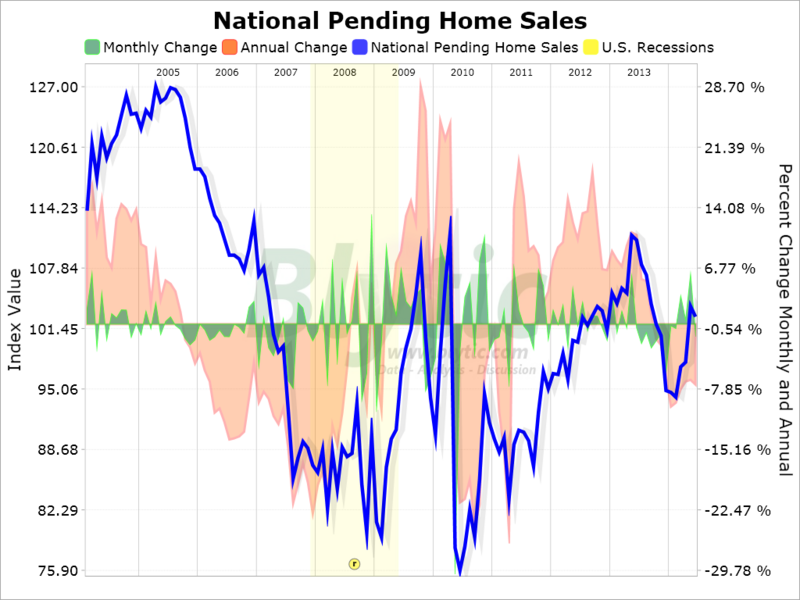Pending home sales dip with supply shortages, flat wages
Loading...
The National Association of Realtors (NAR) released their Pending Home Sales Report for June showing that pending home sales declined with the seasonally adjusted national index falling 1.1 percent from May and dropping 7.3 percent below the level seen in June 2013.
Meanwhile, the NARs chief economist Lawrence Yun indicated that while current activity has improved overall, conditions are still challenging for potential home buyers.
"Activity is notably higher than earlier this year as prices have moderated and inventory levels have improved, ... However, supply shortages still exist in parts of the country, wages are flat, and tight credit conditions are deterring a higher number of potential buyers from fully taking advantage of lower interest rates."
The following chart shows the seasonally adjusted national pending home sales index along with the percent change on a year-over-year basis as well as the percent change from the peak set in 2005 (click for larger version).






